The Squier ’51 guitar. Just the name itself conjures images of a cool, offbeat instrument. When I brought this Squier ’51 guitar home a few months ago, it was clear it needed some love. It wasn’t in terrible shape, but definitely required some restoration to bring it back to its full potential. This model, launched by Squier in the mid-2000s, has gained a dedicated following for its unique charm, affordability, and the sheer fun factor it offers. It’s a guitar that punches above its weight, and I was excited to get my hands dirty and bring this particular one back to life.
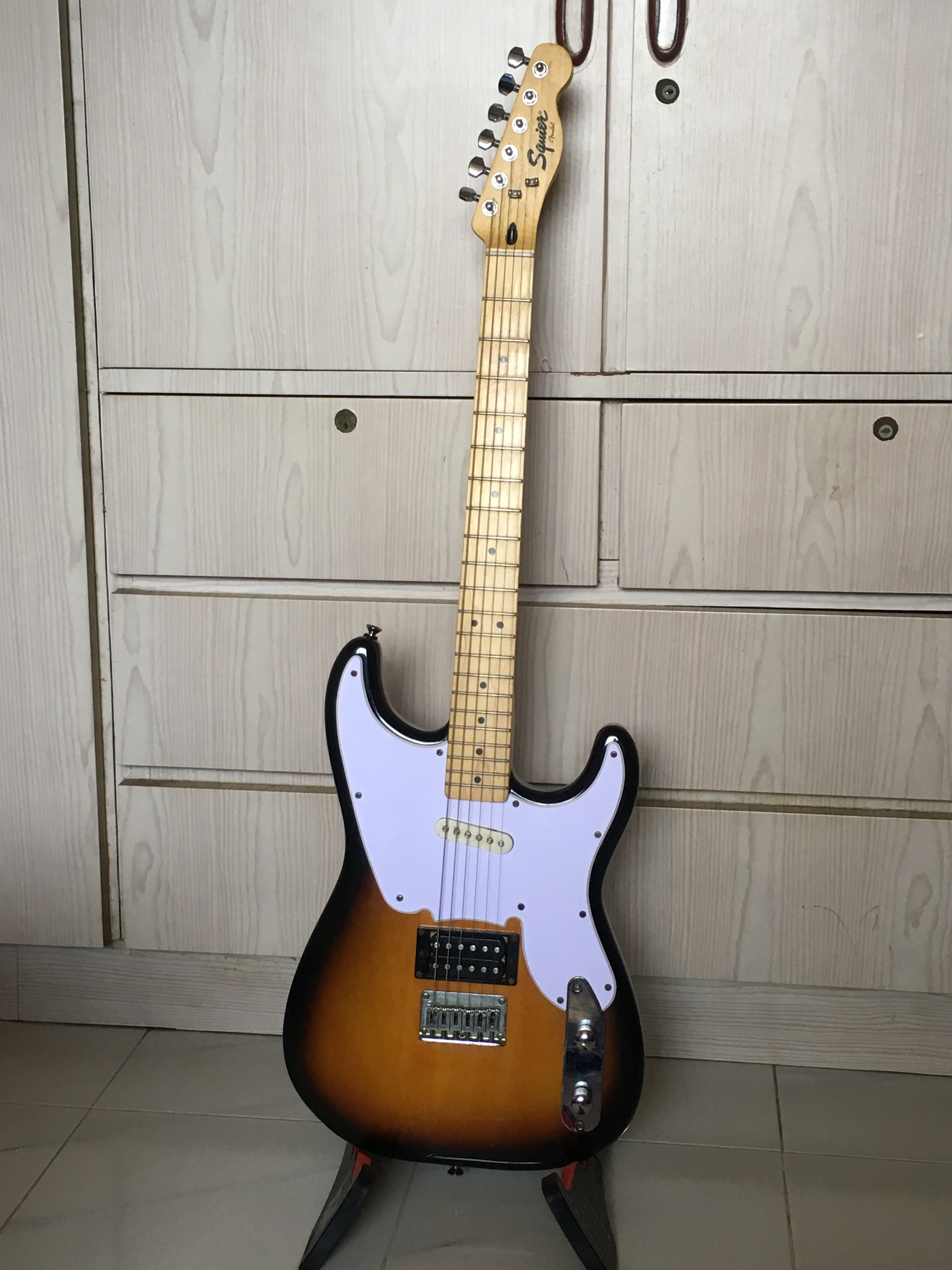 Squier '51 guitar before restoration, showcasing its unique body shape and hardware
Squier '51 guitar before restoration, showcasing its unique body shape and hardware
The Squier ’51 is often described as a Frankensteinian creation, borrowing elements from different Fender classics. It’s got the Stratocaster body shape, a Telecaster-style neck and control layout, and even a pickguard reminiscent of a Telecaster PJ Bass. Despite this mix-and-match approach, the Squier ’51 emerges as a genuinely original design. Its popularity was so significant that Fender themselves took note, releasing the Fender Pawn Shop ’51 and ’72 models in 2011, a testament to the lasting appeal of the original Squier concept. But that’s a story for another time.
The Squier ’51 I acquired is a second-run model from 2014, easily identifiable by its string-through body design, a feature I personally find much more appealing. These later models were produced in Indonesia, known for their consistent quality in instrument manufacturing.
 Close-up of the Squier '51 guitar highlighting the string-through body design of the 2014 model
Close-up of the Squier '51 guitar highlighting the string-through body design of the 2014 model
Setting Up the Squier ’51 for Optimal Playability
Like many guitars that have seen some use or factory setups, my Squier ’51 needed adjustments to play its best. The first issue was excessive neck relief. This is a common problem and thankfully, easily rectified. Using a standard 4mm hex key, I tightened the truss rod nut in small increments until the neck had a more comfortable and playable curvature. This adjustment is crucial for achieving the right string height and preventing fret buzz.
 Adjusting the neck relief on the Squier '51 guitar using a hex key
Adjusting the neck relief on the Squier '51 guitar using a hex key
Next on the list were the string trees. The stock string trees on the Squier ’51 are, to put it mildly, functional but aesthetically unpleasing. In my opinion, they detract from the overall look of the guitar and are prime candidates for replacement.
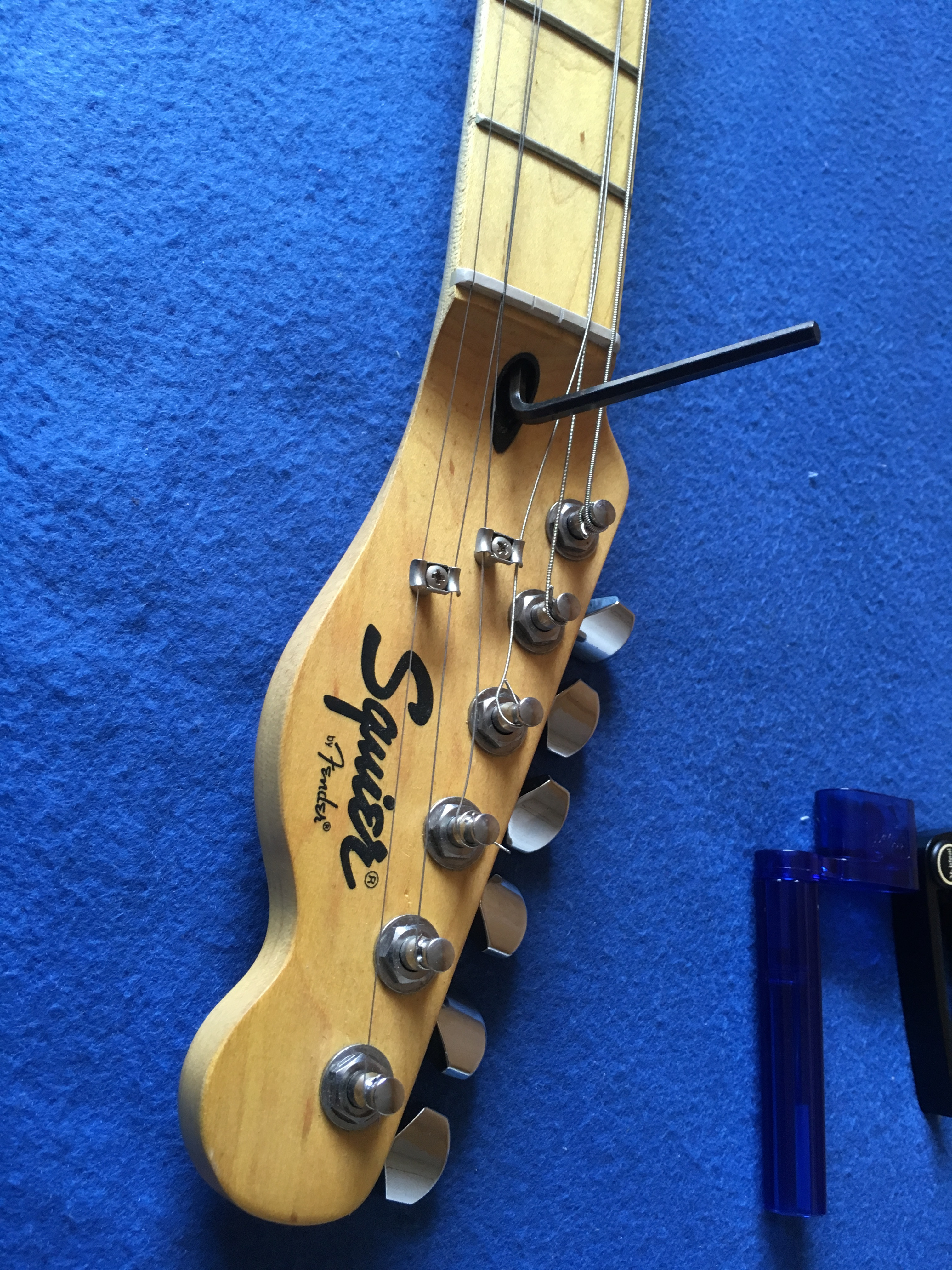 Original, less appealing string trees on the Squier '51 guitar headstock
Original, less appealing string trees on the Squier '51 guitar headstock
I also made minor adjustments to the string height at the bridge saddles to lower the action slightly. After these tweaks, the action was set to a comfortable 1/16 inch at the low E string, measured at the first fret with a capo. This setup provided a balance of comfortable playing and minimal fret buzz.
“Bearclaw Special” Fretboard Treatment for Enhanced Feel
To enhance the playing experience, I decided to give the frets some attention. Using Dr. Duck’s Ax Wax, I carefully polished the frets to bring back their shine. This wax is excellent for fretboard maintenance as it cleans and conditions without using harsh abrasives, which is particularly important for matte finished maple fretboards like the one on this Squier ’51. I wanted to clean and polish without altering the original matte finish.
 Polishing the frets of the Squier '51 guitar with Dr. Duck's Ax Wax for improved smoothness
Polishing the frets of the Squier '51 guitar with Dr. Duck's Ax Wax for improved smoothness
The result was immediately noticeable – smoother frets and a cleaner fretboard. Even my feline supervisor, Latte, seemed to approve of the gleaming frets and freshly cleaned fingerboard!
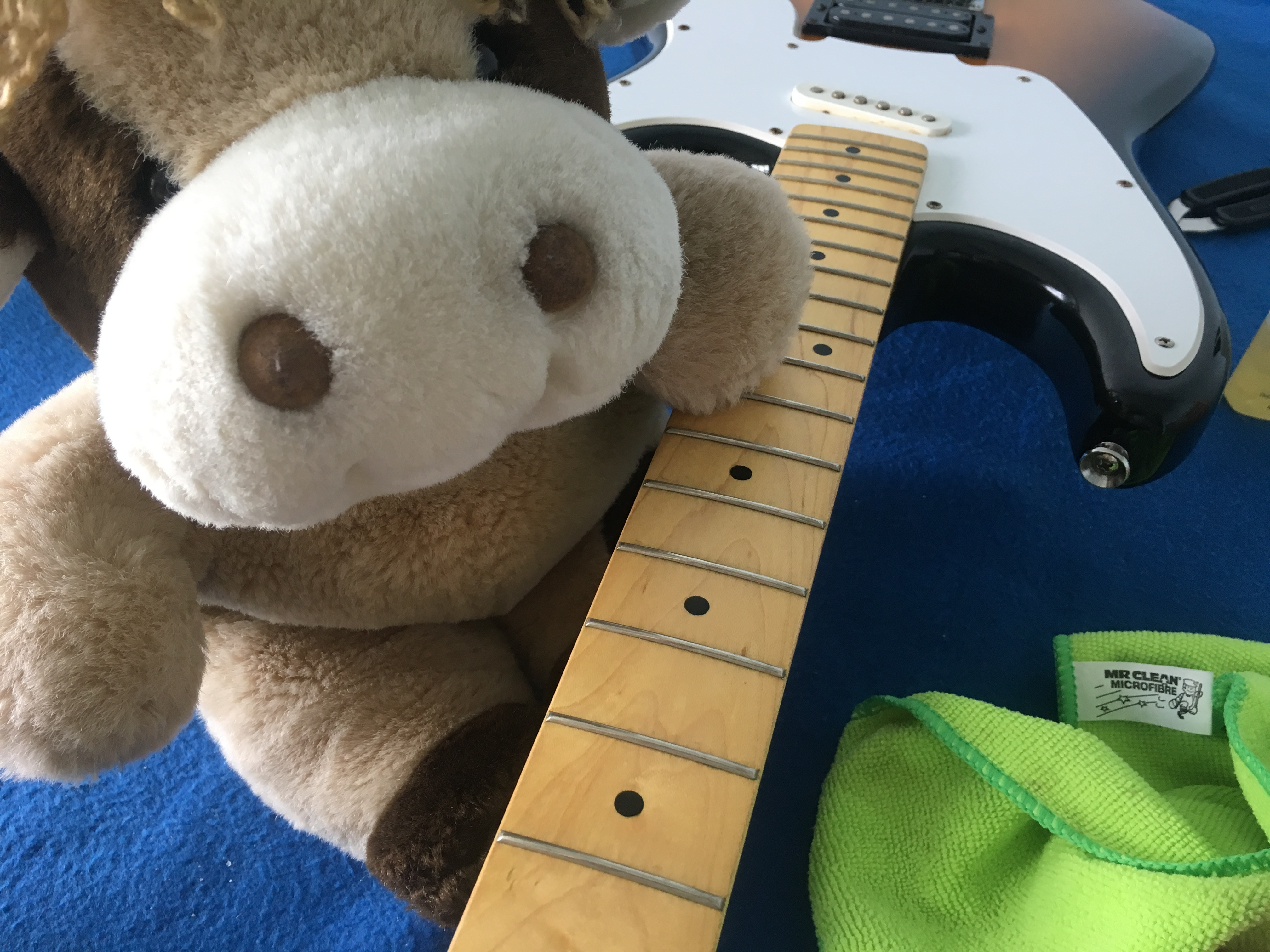 Latte the cat inspecting the freshly polished frets of the Squier '51 guitar
Latte the cat inspecting the freshly polished frets of the Squier '51 guitar
Refreshing and Replacing Worn Parts on the Squier ’51
Moving onto the electronics, I discovered some issues that needed addressing. The volume potentiometer was stiff and seizing up. Thankfully, a generous application of WD40 lubricant managed to free it up. It’s worth noting that the Squier ’51 features a push-pull volume pot as a stock configuration, used to split the bridge humbucker for more tonal versatility. No modifications to the original wiring were necessary in this area.
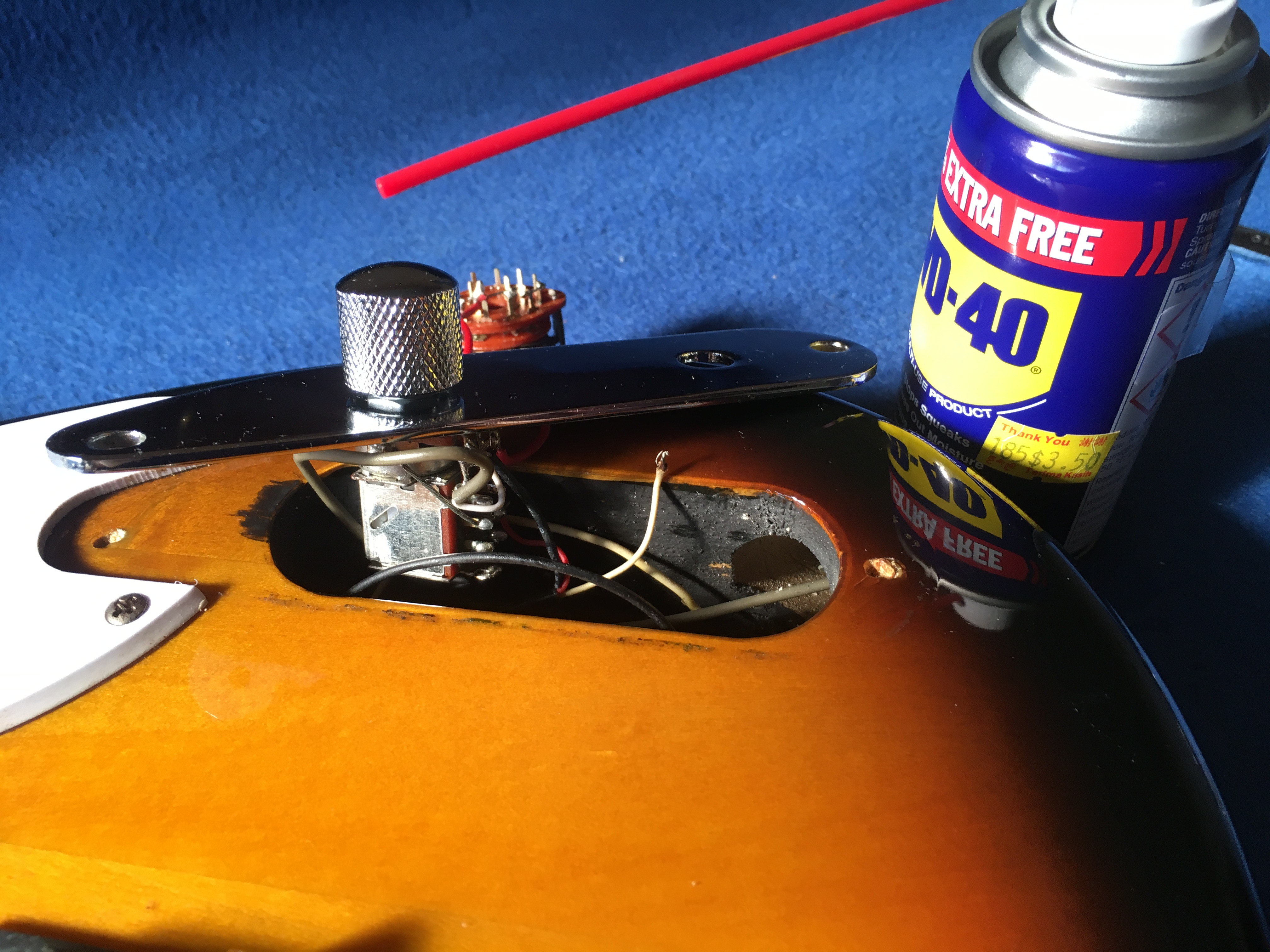 Close-up of the Squier '51 guitar's volume pot with push-pull function, showing the original electronics
Close-up of the Squier '51 guitar's volume pot with push-pull function, showing the original electronics
However, the 3-way selector switch was in much worse condition. It was so stiff and unreliable that it required replacement. Electronics work isn’t my specialty, so I entrusted this task to my friend Richter, who is much more experienced in guitar electronics repair.
 Faulty 4P3T rotary switch removed from the Squier '51 guitar, showing signs of wear and seizure
Faulty 4P3T rotary switch removed from the Squier '51 guitar, showing signs of wear and seizure
Upon inspection, the original switch turned out to be a 4P3T rotary switch, a type more commonly found in radios or appliances than guitars. This somewhat unusual choice from the factory might have contributed to its premature failure.
As mentioned earlier, the original string trees were replaced. I opted for roller-type string trees with staggered post heights. This upgrade provides smoother string movement, reduces friction, and improves tuning stability, especially for the thinner strings. And, of course, they look much better!
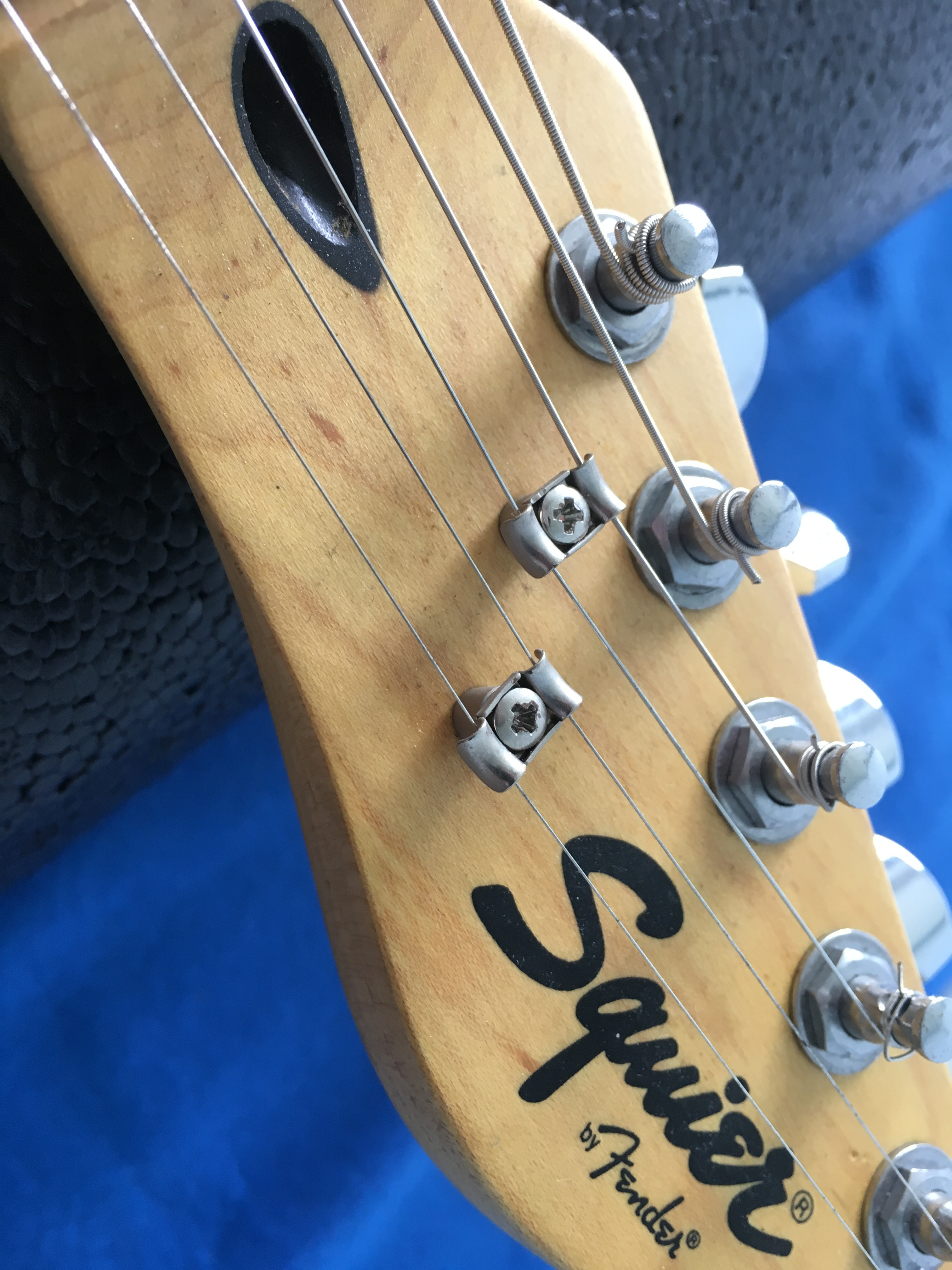 Unattractive, standard string trees with uniform post height before replacement on the Squier '51
Unattractive, standard string trees with uniform post height before replacement on the Squier '51
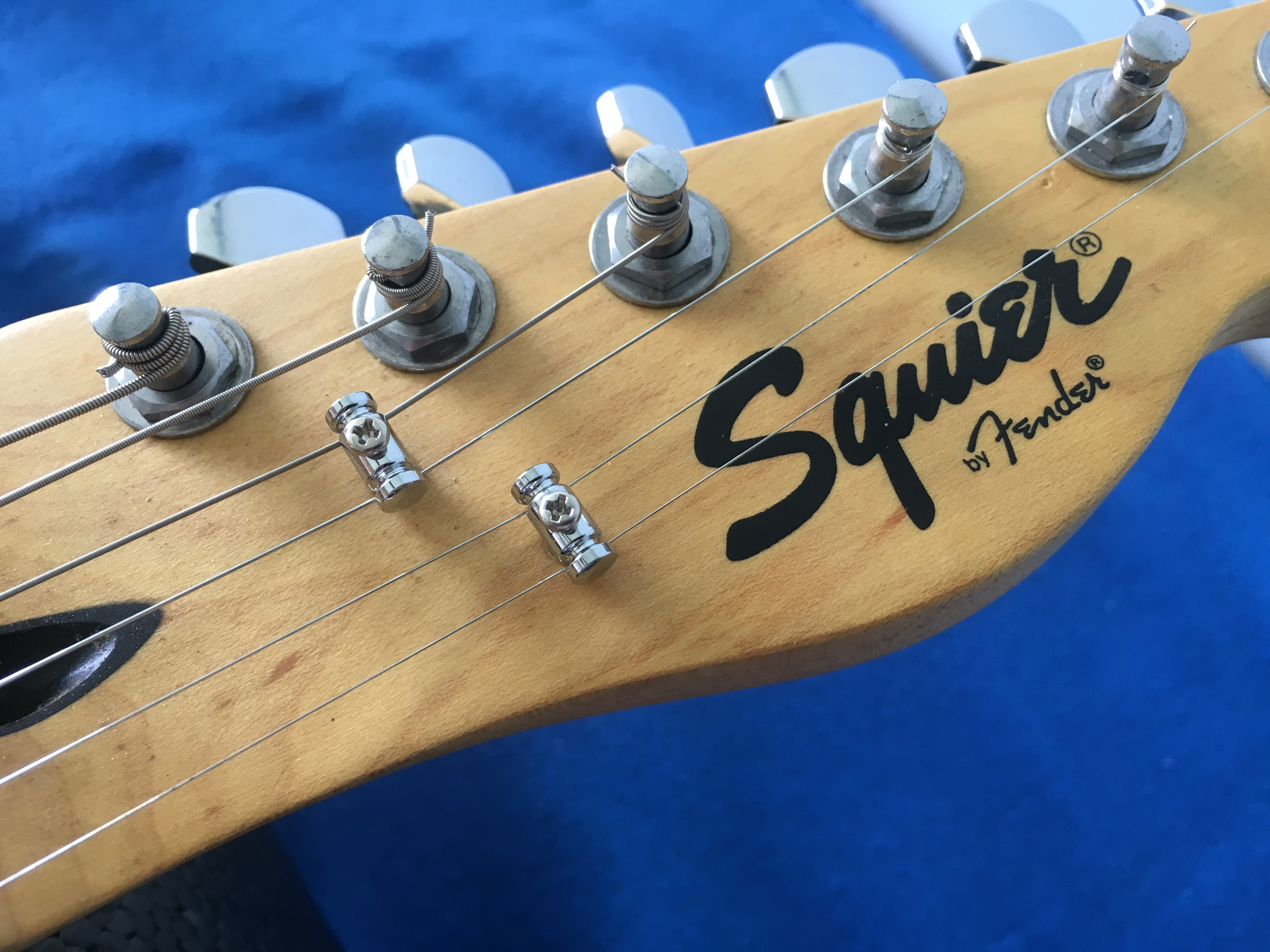 Upgraded roller string trees with staggered post height installed on the Squier '51 guitar, enhancing both function and aesthetics
Upgraded roller string trees with staggered post height installed on the Squier '51 guitar, enhancing both function and aesthetics
Finally, after all the adjustments and replacements, the Squier ’51 received a thorough cleaning and polish. The result is a guitar that not only plays well but also looks fantastic. The neck, in particular, is a standout feature. It feels surprisingly comfortable and substantial, exceeding expectations for a guitar in this price range. If I recall correctly, these guitars retailed for around $269 when new, making them an incredible value.
And, as requested by my ever-present companion, Latte, one more photo opportunity was granted.
Final Thoughts on the Squier ’51
It’s easy to see why the Squier ’51 has garnered such a strong following. Online guitar communities and dedicated Facebook groups are filled with enthusiasts who appreciate this quirky instrument. Its core appeal lies in its simplicity, its inherent mod-friendliness, and the sheer amount of guitar you get for the money.
While the basswood body might be constructed from multiple pieces, a common practice for guitars in this price range, it doesn’t detract from the overall resonance or playability.
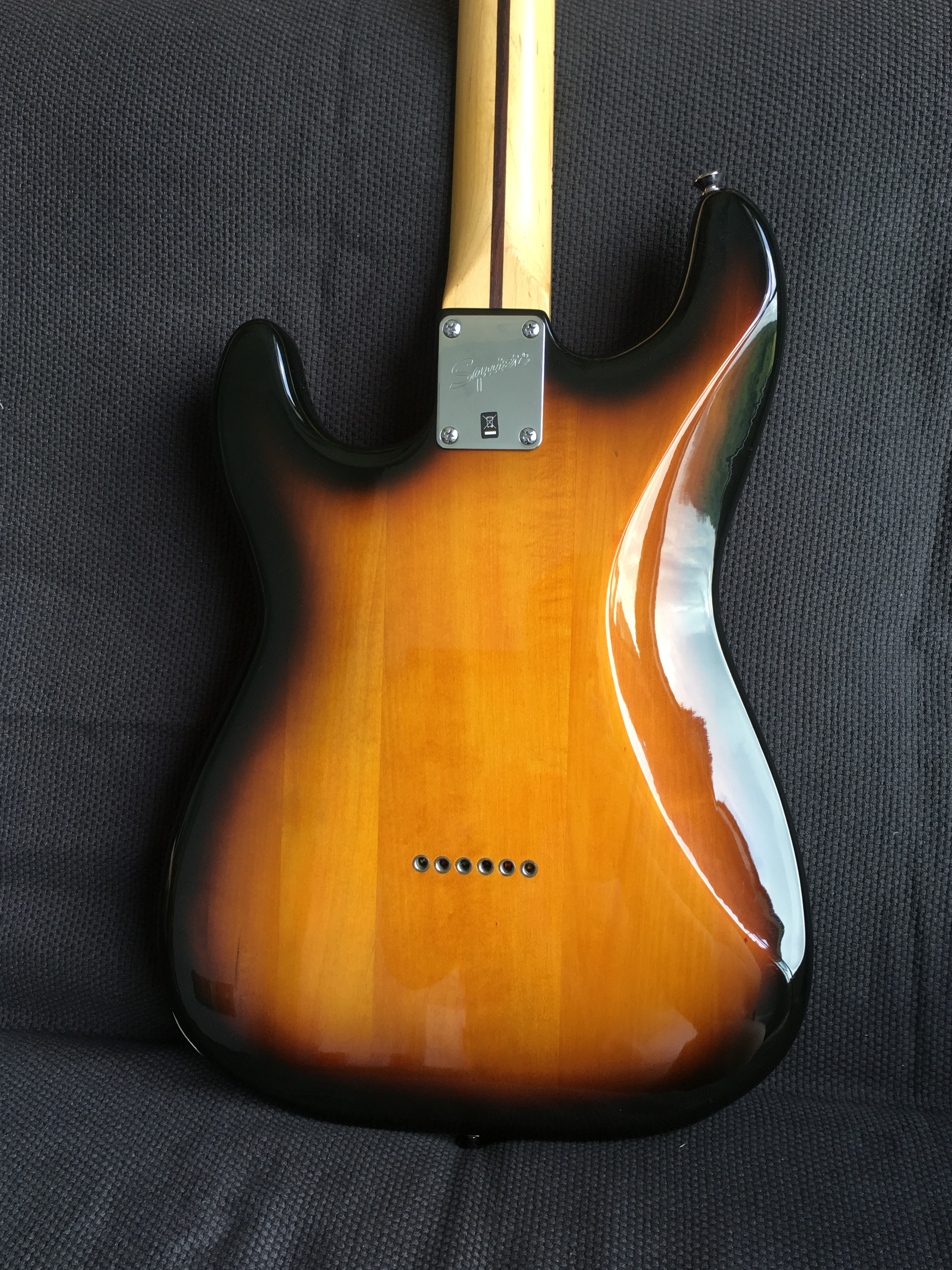 Close-up of the Squier '51 guitar body, showing the multi-piece basswood construction
Close-up of the Squier '51 guitar body, showing the multi-piece basswood construction
The neck, however, is the real star of the show. It genuinely feels like a neck you’d expect to find on a guitar costing significantly more, perhaps in the $400-$500 range. Whether this Squier ’51 becomes a permanent fixture in my collection remains to be seen, but it has certainly made a strong impression. For anyone looking for a fun project guitar or an affordable instrument with bags of character, the Squier ’51 is definitely worth considering.

